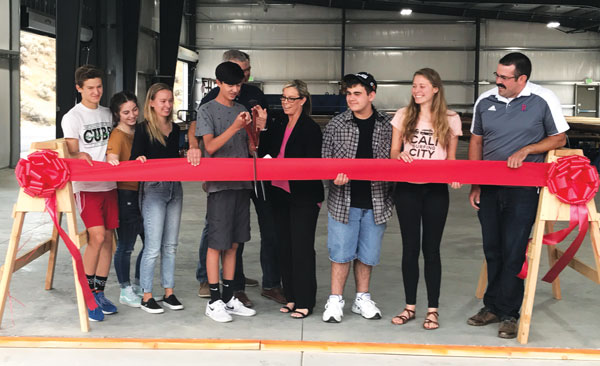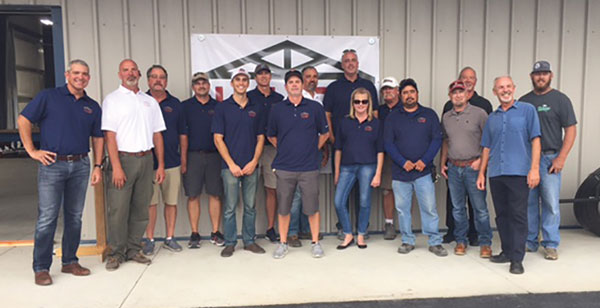Search
JL Schwieters was started in 1980 by my dad, John Schwieters, and his brother, Leo, as a framing labor business.
Component Manufacturers - These companies manufacture and sell trusses, wall panels, related structural components and/or subcomponents.
Associate Members - These companies supply products, equipment, machinery or services to Component Manufacturers. This category includes professional members.
2012 International Residential Code
Chapter 5 Floors (search for R501.3)
- When the IRC provides a solution that cannot be supported by testing of real buildings in a code-compliant application of braced walls, more accurate and technically correct engineered solutions will never be able to compete.
- There is some resistance in the market to establishing standard factors for product equivalency or system performance because it may result in non-wood products graining an advantage over traditional OSB market share.
- A top testing priority for SBCA is “Framing the American Dream III,” which seeks to test a typical stick framed roof and compare its performance to an identical engineered truss roof.
In May of 2018, Door Creek Church broke ground on their new DeForest Campus just minutes north of Madison, Wisconsin. The church was given ten acres by a local developer in what amounts to a suburb of Madison on the edge of urban reach mixed with strong agricultural ties. Originally, a metal building was designed for the church but costs redirected the church’s architect to wood frame construction.
- A quarter of a million people left the housing construction industry from 2002-2012, and many of them have found employment elsewhere.
- Framers are feeling the effects of this exodus more acutely than most, prompting them to look for creative ways to do more with fewer people.
- CMs can play a pivotal role in switching framers from sticks to components by offering installation training and expertise to new framing employees.
A decade after it began operation, SBCRI is making a new push for industry-directed testing to benefit all component manufacturers.
- Combining fiber reinforcement with finger jointed lumber could be a win for both the lumber and component industries.
- With in-line framing, CMs can remove studs and plate material, and spread the stud spacing out to 24", which, in some cases, allows for better insulation methods.
- The key to new product development is generating sales revenue immediately by establishing design values and engineering reports that give assurance of the product’s equivalent code-compliant performance.
Having a voice and a united group of CMs to drive the industry forward is one of the primary reasons for belonging to our trade association.
Have you ever wished SBC Magazine had a brief summary of the great stuff inside each issue? Your wish has been granted! This year we are giving Jess Lohse (Rocky Mountain Truss) an advanced copy of the magazine each month and asking him to write down his thoughts about what he reads. Thanks, Jess, for giving us your CM perspective!
- Everyone buying raw materials for structural components or conventional framing applications is purchasing design values and related properties for use in engineering equations to resist loads for a given load path.
- It is not well known that lumber design values are global in nature and not specific to the piece of lumber being used.
- Design values written into the building code become the law, whether they are scientifically correct or not.
- If the law is treated forthrightly as written, professional engineers have great value in the market.
Meet Joseph Maez at Katerra in Phoenix, Arizona.
Most of the conversations I’ve had with component manufacturers (CMs) about increasing production efficiency inevitably focus on one thing: bottlenecks.
Trusses are engineered components that will perform as intended if installed correctly. However, those who are installing trusses are not always adept in deciphering truss layout drawings.
SBCA’s Jobsite Package is likely the most economical risk management tool a component manufacturer (CM) can deploy.
Educate your customers and protect your business with best practice information regarding handling and installing components.
Learn more about the National Framers Council (NFC), Cold-Formed Steel Council (CFSC), Truss Industry Business Council (TIBC) and the Equipment Council.
How’s your I-joist and floor truss business? SBCA Marketing Committee Chair Jess Lohse wants to know.
Meet SBCA board member Gene Frogale, President of Annandale Millwork and Allied Systems in Chantilly, Virginia.
Erickson staff, including CEO Rich Gallagher (left) and COO Reed Graham (back row, right of center)

Reno Mayor Hillary Schieve (center), Reno High teacher Karl Kuhles (right) and his students in the STEM-based Project Lead the Way program, cut the ribbon to open the High Desert Truss and Lumber plant.
Designers are under tight deadlines; they are constantly being pulled from one project to another, and are routinely being asked to make changes to a project. All of this can create an environment that burns them out and pushes them out the door.
One of the most significant benefits of SBC Magazine’s new online polling approach is it gives component manufacturers (CMs) a glimpse into how their business model and/or local market compares to the industry as a whole.
Global markets, technical expansion and industry growth all contribute to making SBCA a leading force in further development of the structural building component industry—now and in the future!
Advocacy
With a mission to protect and advance the interests of our members, SBCA is the voice of the structural building components industry to legislative, regulatory and standards-generating agencies. SBCA formulates policies concerning the operations of component manufacturers.

A CM, a framer, and a supplier collaborate to significantly innovate shear walls.
Given that our industry is in the component design and engineering business, which is closely related to the building design business, accurate and reliable engineering is central to every CM’s future success.
Apparently, the secret to surviving 50 years in the truss business is to begin by selling lumber, and then working your way into it. Heart Truss & Engineering in Lansing, MI, and Littfin Lumber (Truss) Company in Winsted, MN, are both celebrating half a century of success this year, and they share some common characteristics: one, they both hail from Midwestern states; two, their founders all started by selling lumber and building materials; and three, they all resisted the urge to expand beyond their means.





